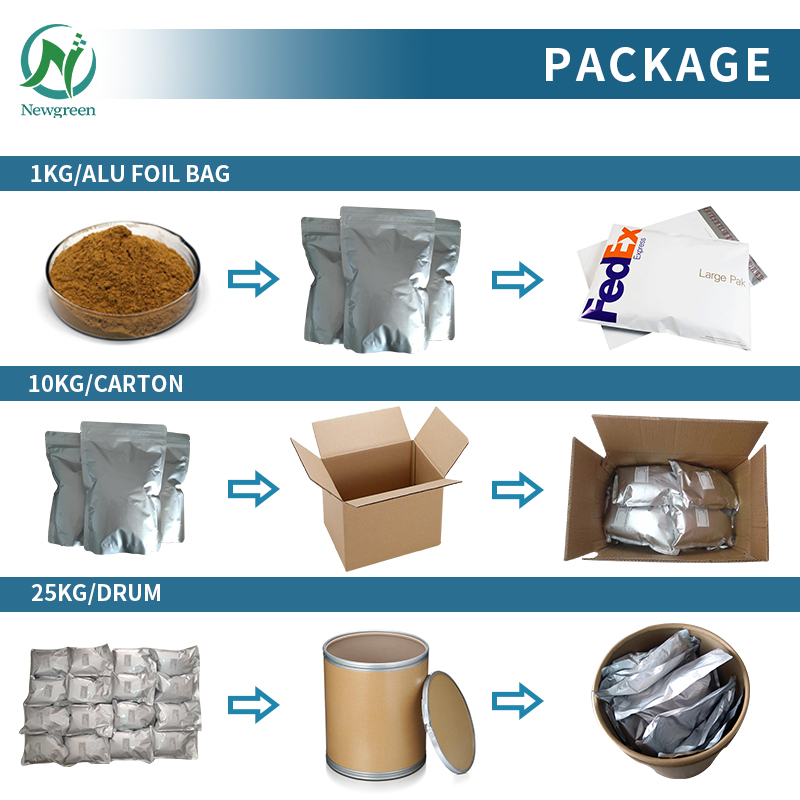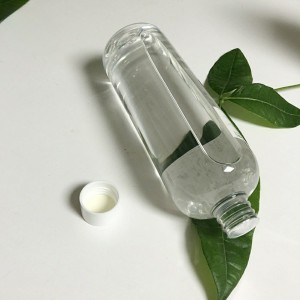Sialic AcidN-Acetylneuraminic Acid Powder Manufacturer Newgreen Sialic AcidN-Acetylneuraminic Acid Powder Supplement

Product Description
Sialic acid is an important glycoside that exists in various tissues and organs in animals. Salivary acid is widely present in various tissues and organs in animals, including saliva, plasma, brain, nerve sheath, liver, lungs, kidneys, and gastrointestinal tract. Among them, saliva is the main source of sialic acid, hence it is named sialic acid. The content of sialic acid in human saliva is approximately 50-100mg/L. In addition, sialic acid can also be produced through the metabolism of food and intracellular enzymes.
Sialic Acid(N-acetylneuraminic acid), scientific name is "N-acetylneuraminic acid", sialic acid is a kind of natural carbohydrate compound that exists widely in the biological system, and it is also the basic component of many glycoproteins, glycopeptides and glycolipids. It has a wide range of biological functions Sialic Acid(N-acetylneuraminic acid)(Neu5Ac, NAN, NANA) is manufactured up to large scale to customer order.
COA
| Items | Specifications | Results | |
| Appearance | White powder | White powder | |
| Assay |
|
Pass | |
| Odor | None | None | |
| Loose Density(g/ml) | ≥0.2 | 0.26 | |
| Loss on Drying | ≤8.0% | 4.51% | |
| Residue on Ignition | ≤2.0% | 0.32% | |
| PH | 5.0-7.5 | 6.3 | |
| Average molecular weight | <1000 | 890 | |
| Heavy Metals(Pb) | ≤1PPM | Pass | |
| As | ≤0.5PPM | Pass | |
| Hg | ≤1PPM | Pass | |
| Bacterial Count | ≤1000cfu/g | Pass | |
| Colon Bacillus | ≤30MPN/100g | Pass | |
| Yeast & Mold | ≤50cfu/g | Pass | |
| Pathogenic Bacteria | Negative | Negative | |
| Conclusion | Conform with specification | ||
| Shelf life | 2 years when properly stored | ||
Function
1. Identify cells and molecules
Salivary acid mainly exists on the surface of cells and is recognized by many cells and molecules through its specific structure. The modification of sialic acid can affect its interaction with other molecules. For example, sialic acid is one of the important adhesion factors for many pathogens to adhere to the surface of host cells. In the immune system, sialic acid can regulate the pathways through which T lymphocytes, B lymphocytes, and macrophages function.
2. Cell signaling
Sialic acid is an important signaling molecule that can regulate the biological activities of various cells. For example, sialic acid can regulate biological processes such as leukocyte migration, cell proliferation, apoptosis, and differentiation. In addition, sialic acid can also regulate the pathway of pathogen invasion into host cells, playing an immune regulatory and protective role.
3. Preventing immune attacks
Sialic acid is an antigenic determinant that can form a covering layer on the surface of cells, thereby protecting them from the attack of the immune system. It can bind to immunoglobulins to prevent the immune system from attacking its own cells.
4. Participate in brain development
Sialic acid also plays an important role in brain development and neuronal activity. It can regulate the interactions between neurons, affect synaptic morphology and function, and other physiological processes. Therefore, sialic acid also plays an important role in memory, learning, and behavioral regulation.
5. Participate in blood coagulation
Sialic acid can promote blood coagulation and increase clotting time. This is because sialic acid can bind to proteins on the surface of red blood cells, forming complexes that promote blood coagulation.
6. Participate in inflammatory reactions
Sialic acid also plays an important role in the inflammatory response. Inflammatory reaction can cause the release and modification of sialic acid, thus regulating many physiological processes such as intercellular signal transmission, cell adhesion and adhesion.
7. Other functions
Sialic acid can also regulate the charge balance between cells, affect enzyme activity, regulate extracellular matrix, and regulate interactions between cells.
Application
(1). In the pharmaceutical field, Sialic Acid Powder has a wide range of applications. It can be used to synthesize drugs, vaccines, and biologics, and is used to treat certain diseases and improve specific symptoms. The binding of sialic acid to cell surface receptors can enhance the selectivity and efficacy of drugs.
(2). Food and nutritional supplements: Salivary acid powder is also used in food and nutritional supplements. It can be used as an additive to improve the taste, stability, and shelf life of food. In addition, sialic acid is also believed to have antioxidant, anti-inflammatory, and immune regulatory functions, which may be beneficial for health.
(3). Biotechnology and bioengineering: Sialic Acid Powder plays an important role in the field of biotechnology and bioengineering. It can be used to produce protein drugs, antibodies, enzymes, and other biological agents, and is used as a component of cell culture media and culture conditions in biotechnology processes.
(4). Sugar chain research: Sialic acid is an important component of sugar chains and therefore holds an important position in sugar chain research. Researchers use sialic acid for the synthesis, modification, and functional study of sugar chains to gain a deeper understanding of its role in biology and disease development.
Package & Delivery



















